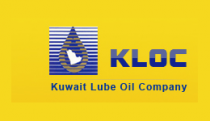Aerogel Market by Type, Form, Processing and Application - Global Forecast to 2025 - ResearchAndMarkets.com
The "Aerogel Market by Type (Silica, Polymer, and Carbon), Form (Blanket, Panel, Particle, and Monolith), Processing (Virgin, Composites, and Additives), Application (Oil & Gas, Construction, Transportation, and Performance Coating) - Global Forecast to 2025" report has been added to ResearchAndMarkets.com's offering.
The aerogel market size is estimated to be USD 638 million in 2020 and is projected to reach USD 1,045 million by 2025, at a CAGR of 10.4% between 2020 and 2025.
Factors such as super thermal resistance, a thinner and lighter alternative will drive the aerogel market. The major restraint for the market will be the high manufacturing cost, poor mechanical strength. However, the potential substitute for conventional insulation materials will act as an opportunity for the market.
Silica based aerogel is estimated to be the largest type in 2019.
The method of synthesizing silica aerogel is economical, and the process is very versatile. Silica aerogels are best known for tremendously combining low thermal conductivity with high optical transparency. They are transparent; however, due to the Rayleigh scattering effect, they appear to be blue and are hence commonly called frozen smoke or blue smoke. The high insulating properties, low cost, abundant raw material availability, and the versatile process of manufacturing are driving the silica-based aerogel market. Silica is the first type of aerogel to be made commercially available. Silica aerogel materials are particularly intriguing due to their ultra-low weight and transparency. A visibly transparent super-insulating material is compatible with many applications.
Aerogel in blanket form is estimated to be the largest market in 2019.
The blanket form is the largest segment of the aerogel market. It was the first form of commercial aerogel for various applications. The blanket material has a clear value proposition, as it is super insulating and two to three times better than particle material in terms of thermal properties. Blanket materials are used for a broad range of applications, such as oil & gas, construction, automotive, and marine and aerospace, as these can be cut and modified as per specific requirements due to their flexible physical structure.
Virgin aerogel is estimated to be the largest market in processing segment in 2019.
As manufactured aerogels are called virgin aerogels - the original form of aerogel, which is not loaded with any other material or chemically treated to enhance its physical structure. The only drawback of virgin aerogels is that they are extremely brittle. Virgin aerogels are used in several applications, owing to their commercial availability in comparison to fabricated aerogels. Aerogel materials in the as manufactured segment are used directly in their original forms for applications, such as the use of silica aerogel in R&D. These aerogels are functional for industrial applications without any further processing or alterations and are used in the same form produced by aerogel manufacturers. Materials in this segment do not require additional manufacturing, compounding, coating, modification, or subsequent processing to be used in applications.
The oil & gas application is projected to account for the largest share, in terms of volume and value, of the overall aerogel market between 2020 and 2025.
Fossil fuels play a vital role in meeting the ever-increasing demand for energy. Right from generating electricity to working of automobiles, fuels such as diesel and petrol are required in one or the other way. The oil & gas segment involves exploration, extraction, refining, and selling of products obtained from crude oil. The segment generates huge revenue making it one of the important components of the world's economy. The investments required in this segment are also quite high, considering the lead times for finding and extracting hydrocarbons. The output needs to be carefully transported to the regasification sites through long pipelines. The whole procedure takes place in challenging environments, such as subsea pipelines and rigs in Arctic waters. For the uninterrupted flow of hydrocarbons, maintaining the temperature of these pipelines is important. Hence, the oil & gas industry heavily depends on insulation.
Market Dynamics
Drivers
- Superior Thermal Resistance
- Thinner and Lighter Alternative
- Environment-Friendly Material
- Demand from Construction Application
Restraints
- High Manufacturing Costs
- Poor Mechanical Strength
Opportunities
- Potential Substitute for Conventional Insulation Materials
- New Applications in Apparel Market
- Growing Applications in Day-Lighting Segment
- Growing Demand from Aviation Industry
- Enormous Demand from LVHS Segment
Companies Mentioned
- Active Aerogels
- Aerogel Insulation India
- Aerogel Technologies
- Aerogel UK
- Armacell
- Aspen Aerogels
- Basf
- Blueshift International Materials
- Cabot Corporation
- Dow Corning
- Enersens
- Gelanggang Kencana
- Green Earth Aerogel Technologies
- Guangdong Alison Hi-Tech
- Intelligent Insulation
- Jios Aerogel
- Nano Tech Co. Ltd.
- Ocellus
- Protective Polymers
- Surnano Aerogel
- Taasi Corporation
For more information about this report visit https://www.researchandmarkets.com/r/oo27p9
View source version on businesswire.com: https://www.businesswire.com/news/home/20201224005140/en/



